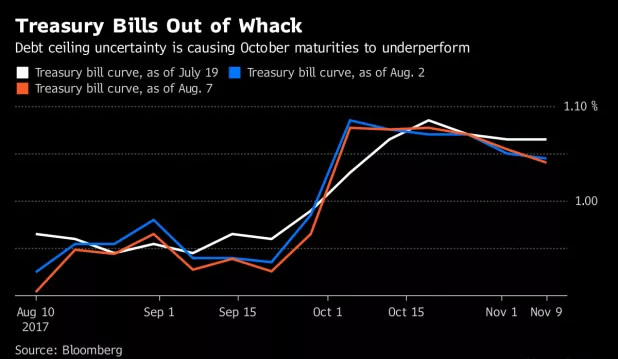While the latest rhetoric from Washington is in favor of a so-called clean increase in the debt ceiling, the Treasury bill market isn’t buying it.
Traders are already willing to pay more for debt expiring after October to avoid being caught holding securities potentially vulnerable to a technical default as bills maturing Oct. 5 are yielding 1.078 percent, versus 1.05 percent for securities due Nov. 2, as progress to expand the nation’s statutory debt limit stalls.
Treasury Secretary Steven Mnuchin said in a July 28 letter to Congress that it’s “critical” for Congress to act by Sept. 29, the first time a specific date has been attached to debt-ceiling warnings.
That may prove to be nerve wracking with the House of Representatives already on recess and the Senate unlikely to tackle the issue in the next week. That would give lawmakers 12 legislative sessions to resolve the issue when they return Sept. 5.
The fact that Treasury designated Sept. 29 as a “red-letter date” heightens the headline risks in all of the Treasury’s early October maturities, Lou Crandall, chief economist at Wrightson ICAP, wrote in a note Monday.
